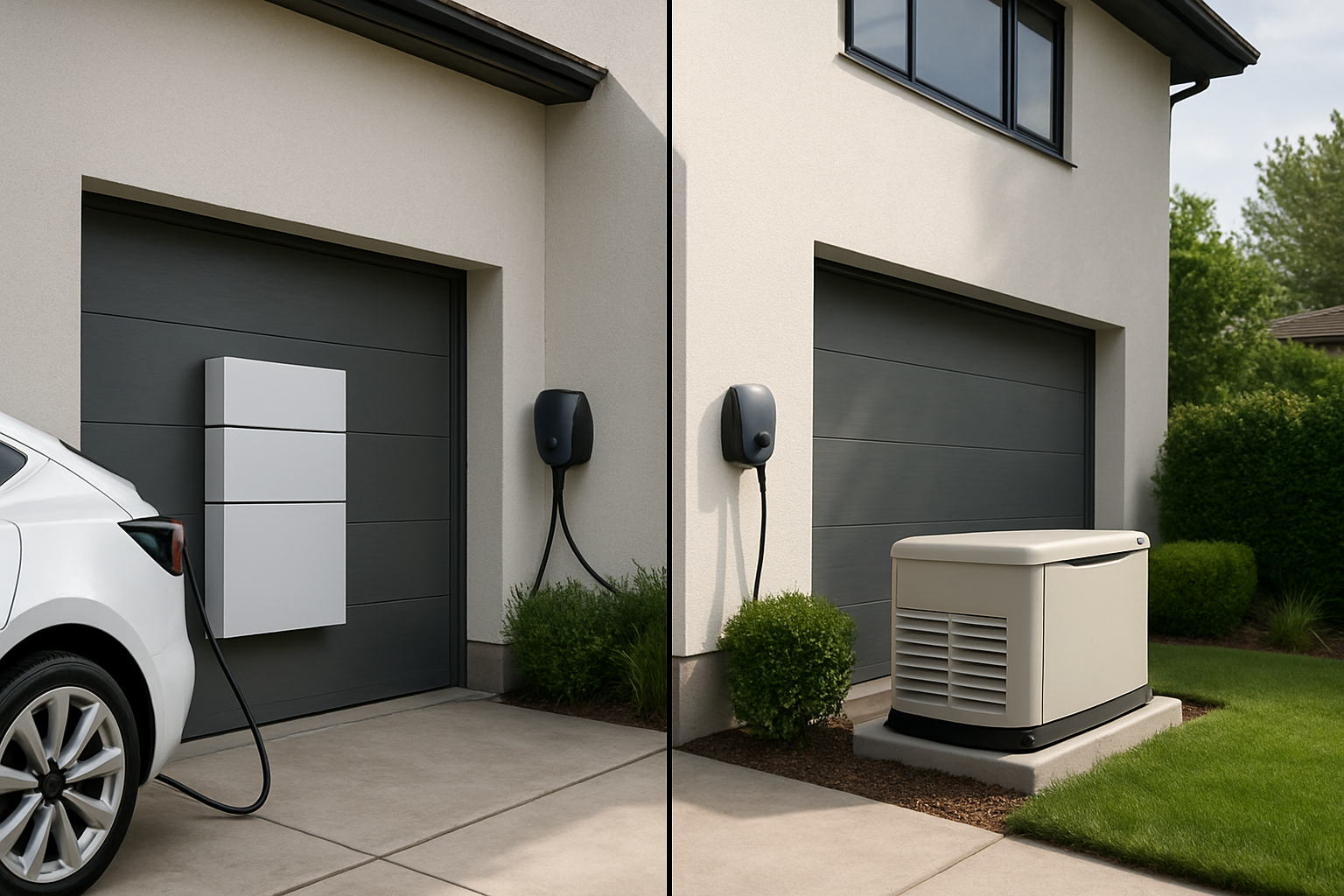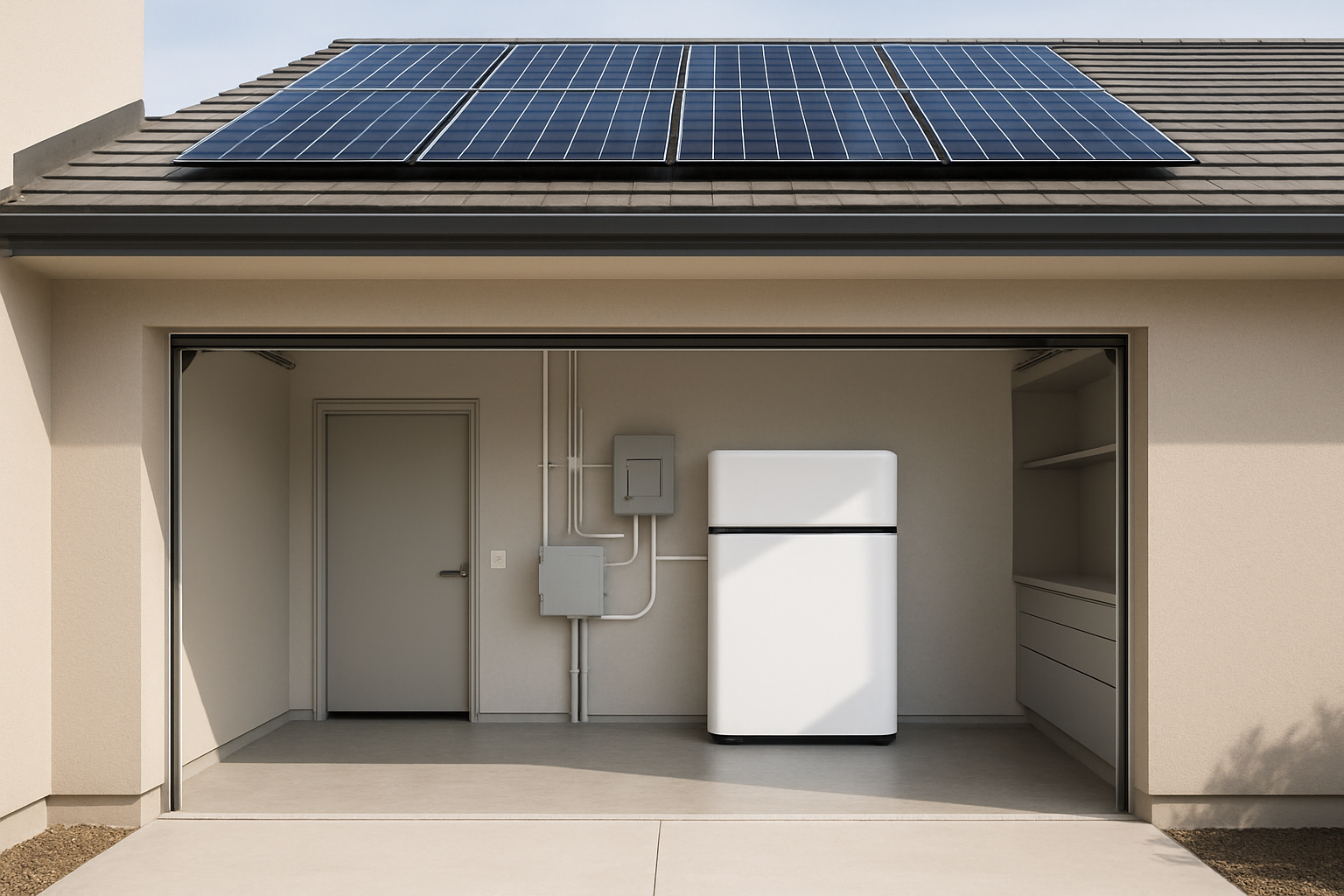Choosing between battery backup and generator systems for your home's critical loads requires careful calculation of power requirements, runtime needs, and cost considerations. After working with hundreds of homeowners on backup power solutions, I've learned that proper sizing makes the difference between reliable protection and costly oversights.
The key lies in understanding your critical loads first, then matching the right technology to your specific needs. While batteries excel at powering essential circuits silently and efficiently, generators offer unlimited runtime for extended outages. Your choice depends on which loads you prioritize and how long you need them running.
Identifying Your Critical Home Loads
Before sizing any backup system, you must identify which circuits are truly critical during power outages. Not all electrical loads are created equal, and trying to backup everything leads to oversized, expensive systems.
Essential vs Nice-to-Have Loads
Essential loads keep you safe and comfortable during outages. These typically include refrigeration (400-800W), lighting (200-500W), communication devices (50-200W), and medical equipment if needed. Nice-to-have loads like electric water heaters (4000-5000W), air conditioning (3000-5000W), and electric dryers (3000-5000W) consume significantly more power.
From my experience installing backup systems, most homeowners can maintain comfortable living with 3-8 kW of critical load coverage. This powers refrigerators, some lights, electronics, and a few outlets for essential appliances.
Load Assessment Methods
Use a power meter to measure actual consumption rather than relying on nameplate ratings. Many appliances draw less power than their maximum rating suggests. For example, a 20 cubic foot refrigerator rated at 800W typically draws 150-200W during normal operation.
| Appliance | Nameplate Rating | Typical Operating Power |
|---|---|---|
| Refrigerator (20 cu ft) | 800W | 150-200W |
| LED Lighting (10 bulbs) | 100W | 100W |
| WiFi Router + Modem | 50W | 25-35W |
| Sump Pump (1/2 HP) | 750W | 400-600W |
| Furnace Blower | 600W | 400-500W |

Battery Sizing for Critical Loads
Battery sizing involves calculating both power capacity (kW) and energy storage (kWh) requirements. The power rating determines how many appliances can run simultaneously, while energy capacity determines runtime.
Power Capacity Calculations
Calculate your peak simultaneous load by adding the operating power of all devices that might run at the same time. Include startup surges for motor-driven appliances, which can be 3-7 times their running power for a few seconds.
For a typical critical load setup requiring 3 kW continuous power with occasional 6 kW surges, a 5-6 kW battery inverter provides adequate headroom. Modern lithium iron phosphate (LiFePO4) batteries can deliver their full rated power continuously without derating.
Energy Storage Requirements
Energy storage depends on your desired backup duration. Calculate daily energy consumption by multiplying each load's power by its daily runtime hours. A typical critical load system consuming 3 kW for 8 hours daily needs 24 kWh of storage for one day of backup.
However, according to IRENA's electricity storage framework, residential battery systems benefit from modular design allowing capacity expansion as needs change. Starting with 10-15 kWh provides 12-24 hours of backup for essential loads, with options to add modules later.
Battery System Advantages
Battery systems excel in several areas that make them ideal for critical loads. They activate instantly without the 10-30 second delay typical of generators. Silent operation allows installation indoors, eliminating weather-related startup issues. Zero emissions mean safe operation in any location without ventilation concerns.
Integration with solar panels creates energy independence, with IEA research showing that distributed solar assets combined with battery storage can effectively increase self-consumption and reduce grid dependence by shifting produced energy to match consumption patterns.
Generator Sizing for Critical Loads
Generator sizing focuses primarily on power output, as fuel provides virtually unlimited energy capacity. The challenge lies in matching generator capacity to your load profile while accounting for efficiency and power factor considerations.
Power Output Requirements
Size generators at 125-150% of your calculated continuous load to account for power factor and efficiency losses. A 3 kW continuous load requires a 4-5 kW generator minimum. Larger generators (7-10 kW) provide flexibility for additional loads during extended outages.
Consider starting surge requirements carefully. A generator rated for 5 kW continuous might only handle 6-7 kW surge, potentially insufficient for multiple motor starts. Inverter generators provide cleaner power and better surge handling than conventional units.
Runtime and Fuel Considerations
Fuel capacity determines runtime between refueling. A 5 kW generator typically consumes 0.5-0.75 gallons per hour at 50% load. With a 5-gallon tank, expect 7-10 hours of runtime. Larger fuel tanks or propane connections extend runtime significantly.
Natural gas generators eliminate fuel storage concerns but depend on gas utility reliability. Propane offers a middle ground with larger fuel storage capacity than gasoline and longer shelf life.
Generator System Limitations
Generators require outdoor installation with proper ventilation, making them vulnerable to weather conditions. Cold weather starting can be problematic, and regular maintenance includes oil changes, filter replacements, and periodic exercise runs.
Noise levels typically range from 60-75 dB at 7 meters, potentially disturbing neighbors during extended use. Local regulations may restrict operating hours, limiting their effectiveness for round-the-clock critical loads.
Cost Analysis: Battery vs Generator Systems
Initial costs favor generators, but total cost of ownership over 10-15 years often favors battery systems due to fuel and maintenance expenses.
Upfront Investment Comparison
A 5 kW generator with automatic transfer switch costs $3,000-$6,000 installed. An equivalent battery system with 15 kWh storage costs $12,000-$18,000 installed. The 2-3x higher initial cost of batteries represents the primary barrier for many homeowners.
However, battery costs continue declining. IEA's clean energy innovation report indicates that battery technology benefits from high modularity and increasing value chain maturity, particularly for home battery storage applications.
Operating Cost Analysis
Generators incur ongoing fuel costs of $2-4 per hour of operation, plus annual maintenance costs of $200-500. Over 10 years with moderate use (50 hours annually), fuel alone costs $1,000-$10,000 depending on usage patterns.
Battery systems have minimal operating costs beyond occasional monitoring system updates. No fuel, oil changes, or filter replacements needed. Lithium iron phosphate batteries typically retain 80% capacity after 6,000-10,000 cycles, translating to 15-20 years of service life.
| Cost Factor | 5 kW Generator (10 years) | 5 kW Battery System (10 years) |
|---|---|---|
| Initial Cost | $5,000 | $15,000 |
| Fuel (50 hrs/year) | $2,500 | $0 |
| Maintenance | $3,000 | $500 |
| Total 10-Year Cost | $10,500 | $15,500 |
Making the Right Choice for Your Home
The decision between battery and generator backup depends on your specific priorities, usage patterns, and budget constraints. Each technology serves different needs effectively.
When Batteries Make Sense
Choose battery systems when silent operation is crucial, such as in urban areas with noise restrictions. They excel for homes with solar panels, creating integrated energy systems that provide both daily cost savings and emergency backup.
Battery systems work best for short-duration outages (4-24 hours) and critical loads under 5-8 kW. They're ideal for homeowners who prioritize convenience, environmental benefits, and long-term cost savings over lower upfront costs.
When Generators Excel
Generators remain superior for extended outages lasting multiple days, especially in rural areas prone to severe weather events. They handle larger loads more cost-effectively and provide unlimited runtime with adequate fuel supply.
Choose generators for backup power needs exceeding 10 kW, homes without solar integration, or budgets requiring lower initial investment. They're essential for applications requiring continuous power for critical medical equipment or business operations.
Hybrid Approaches
Some homeowners benefit from hybrid systems combining both technologies. A small battery system handles frequent short outages silently, while a generator provides extended backup for rare long-duration events. This approach optimizes both convenience and comprehensive protection.
Implementation Best Practices
Successful backup power installation requires careful planning, proper equipment selection, and professional installation to ensure reliable operation when needed most.
Start with accurate load assessment using actual measurements rather than nameplate ratings. Size systems for your true critical loads, not your entire electrical panel. Plan for future expansion with modular battery systems or generator capacity upgrades.
Professional installation ensures code compliance, proper grounding, and safe operation. Both battery and generator systems require transfer switches to safely isolate your home from the utility grid during outages.
Regular testing and maintenance keep systems ready for emergency use. Battery systems need periodic monitoring of charge levels and cell balance. Generators require monthly exercise runs and seasonal maintenance to ensure reliable starting.
The right backup power solution protects your family's safety and comfort during outages while fitting your budget and lifestyle. Whether you choose the silent reliability of batteries or the unlimited runtime of generators, proper sizing ensures your critical loads stay powered when the grid fails.





Leave a comment
All comments are moderated before being published.
This site is protected by hCaptcha and the hCaptcha Privacy Policy and Terms of Service apply.